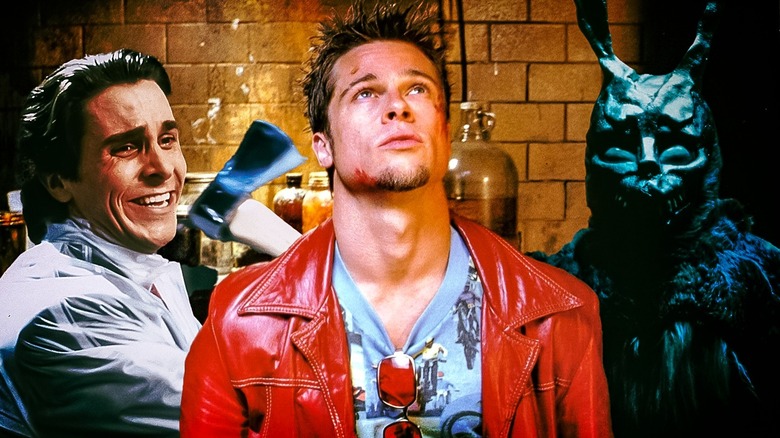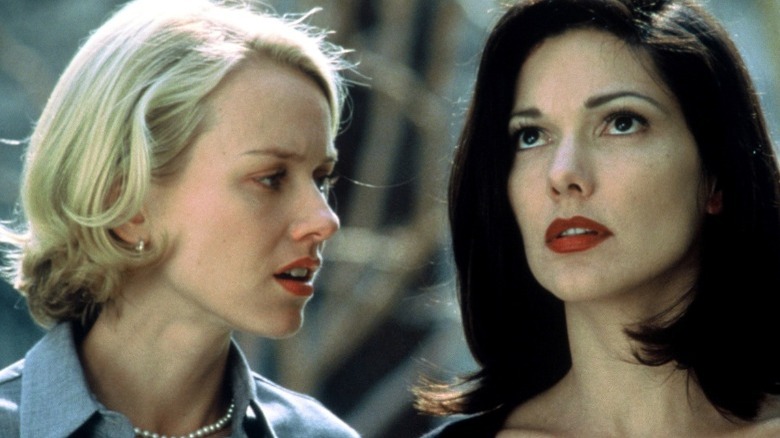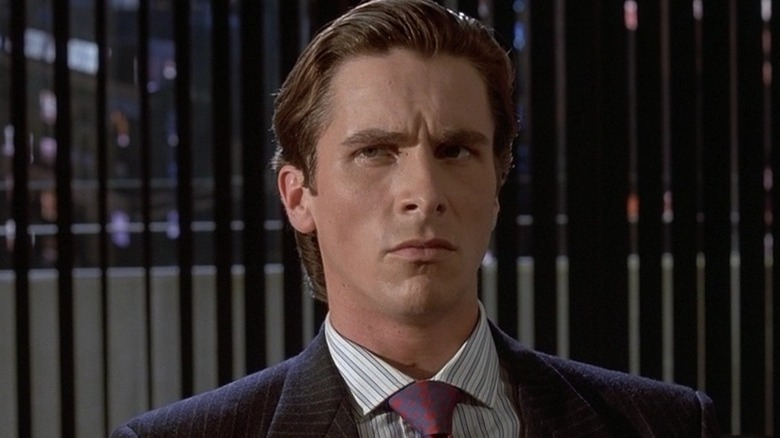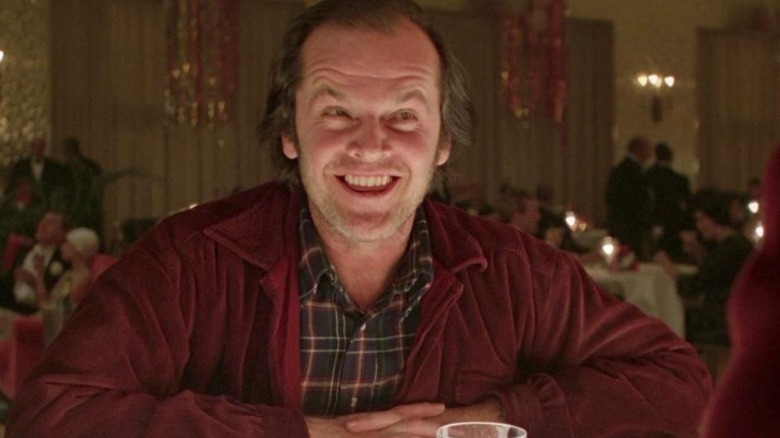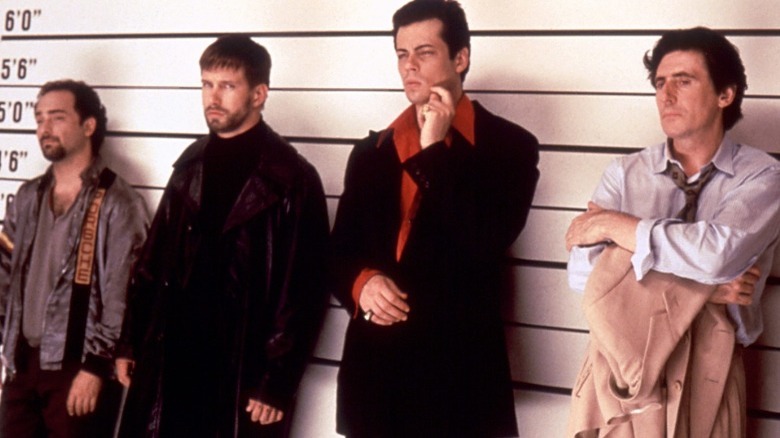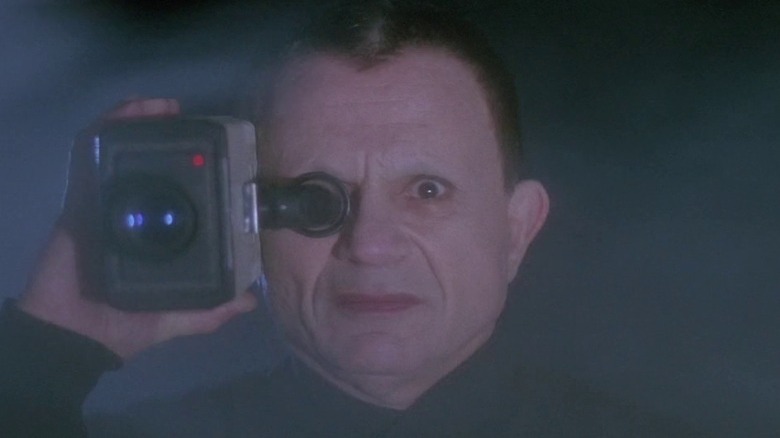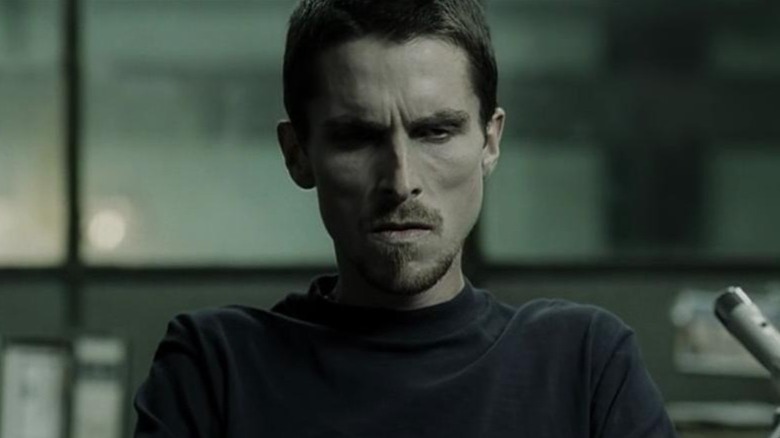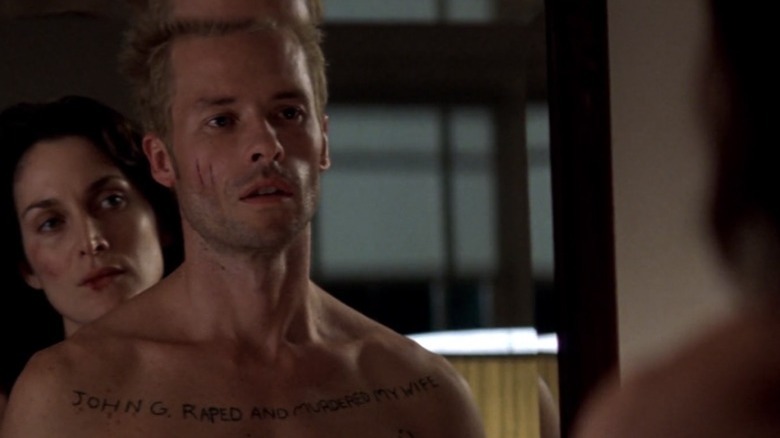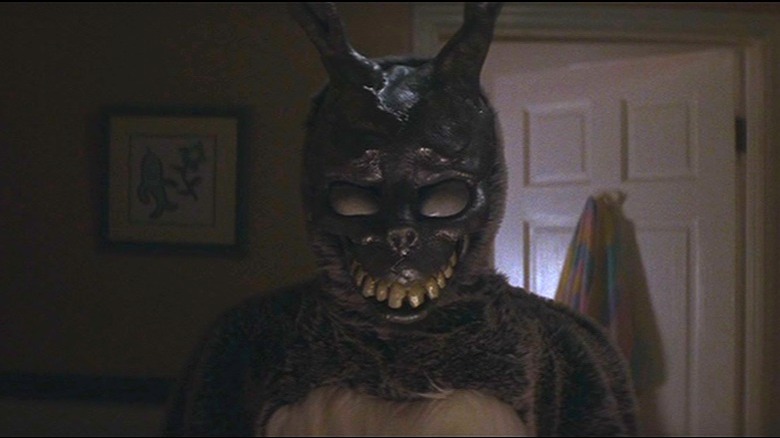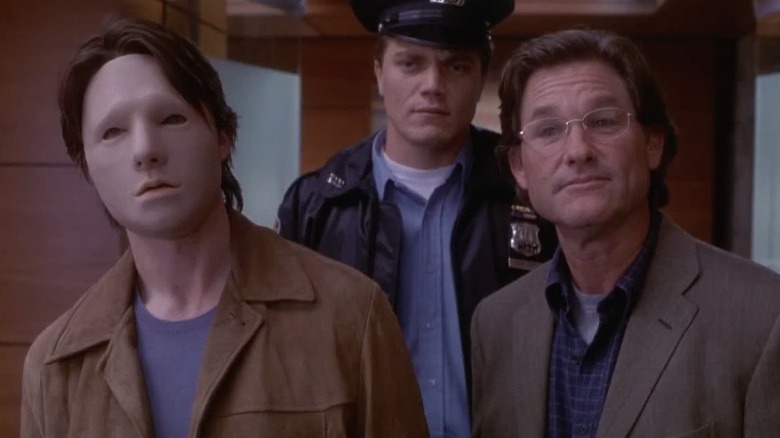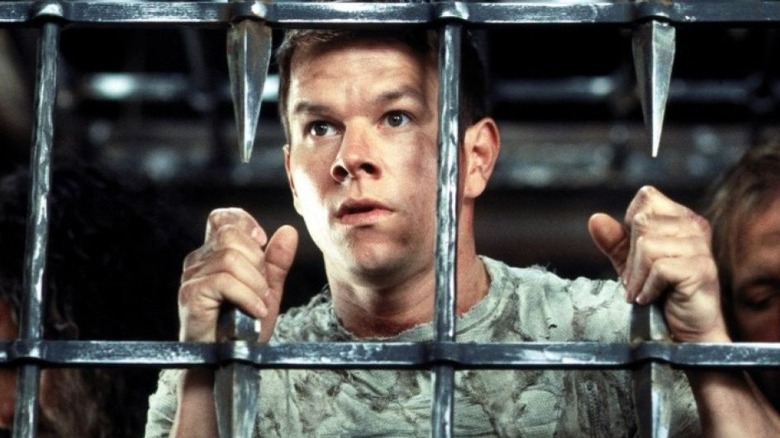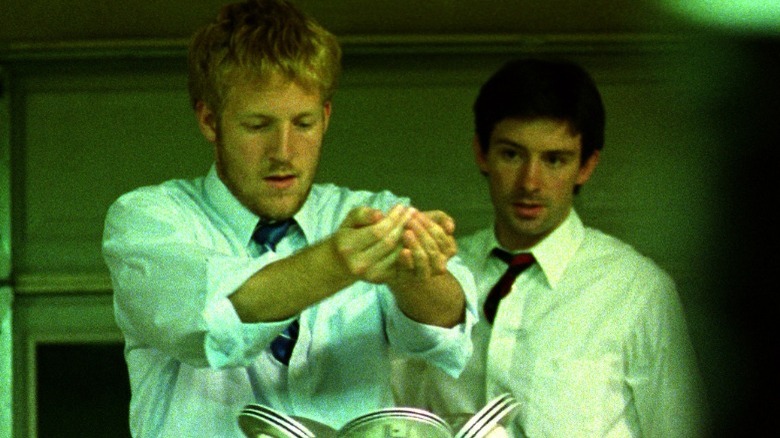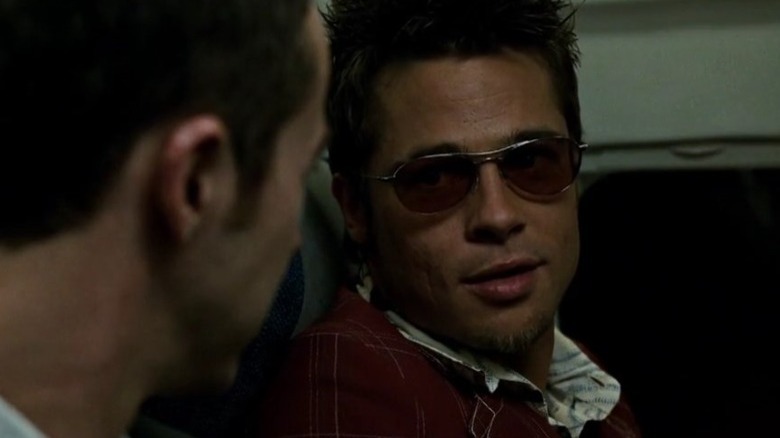Movie Plot Twists People Still Don't Understand
Plot twists have been part of stories throughout history, from books and plays to film and television. They are an important tool in storytelling, providing a way to surprise and shock audiences in a way that would otherwise not be possible. Such moments can also make a movie memorable and add drama or suspense at a moment when the audience believes they have figured everything out. Just think of the famous "Star Wars" scene when Darth Vader reveals his relationship with Luke Skywalker as an example of when everyone's minds were completely blown by the unexpected revelation.
But plot twists are incredibly hard to get right. Done correctly, they can elevate a film and help cement its place in history. If executed poorly, they can ruin an otherwise good story and alienate viewers. A possible third option is that the plot twist is so complex and surprising that it leaves those watching utterly confounded, without any idea of what and why it happened. All of these films are guilty of doing exactly that, as many people still don't understand these famous film plot twists.
Mulholland Drive
David Lynch is undoubtedly one of the most important filmmakers of the current era, helming films such as "The Elephant Man" and "Blue Velvet" as well as co-creating the highly acclaimed television series "Twin Peaks." The director is also known for including shocking plot twists and surprising moments in his movies, and "Mulholland Drive" is no exception. Starring Naomi Watts, Laura Harring, and Justin Theroux, the film largely follows a young actress who befriends a woman suffering from amnesia but also involves a series of other characters with their own stories.
Like many of Lynch's films, "Mulholland Drive" makes use of a surrealist style that leaves it open to interpretation from viewers. This means that much of the narrative can be confusing to the audience. By the end of "Mulholland Drive," it emerges that the amnesiac known as Betty is actually not a real person but rather an invention from Watts' character who she embodies. Like any great mystery, it entices anyone watching it into trying to figure out exactly what is going on but that is not an easy task.
Although it isn't completely clear what leads up to the bizarre ending of the film and its revelations about the two main characters, some suggest that everything is a dream of feverish hallucination up until the point when Diane opens up the blue box and then seemingly dies by suicide after shooting herself.
American Psycho
"American Psycho" is a 2000 horror film that sees Christian Bale take on the role of Patrick Bateman, an investment banker who's also a demented serial killer. Like the novel it's based on, Bateman takes the frustrations of his unsatisfying life out on innocent victims who he brutally tortures and kills. Not only does he murder a work colleague — he uses his apartment to lure back other unsuspecting victims. He also dismembers many of their bodies, hiding them in the building while evading a private investigator.
However, near the end of the film, all evidence of his crimes has seemingly disappeared without a trace while Bateman's confessions are ignored by everyone around him. One of his victims is also said to still be alive and working in London, leaving open the possibility that Bateman may not have actually killed anyone at all.
The one thing that is obvious is that Bateman is obviously suffering from a mental illness, with antisocial personality disorder being a possible cause of his actions or delusions. Of course, that doesn't stop viewers from not understanding what the ending to "American Psycho" means. There is evidence that at least some of the killings were real despite the ending hinting that everything was in his head and it appears as if Bateman exaggerates his actions and may well have imagined many of the murders.
The Shining
Based on Stephen King's 1997 novel of the same name, "The Shining" is a psychological horror film directed by Stanley Kubrick. Jack Nicholson and Shelley Duvall star as the husband and wife duo, known as Jack and Wendy Torrance, living at the Overlook Hotel as Jack slowly descends into madness due to the supernatural forces inhabiting the building. Near the end of the film, he tries to murder his family who is able to escape from the hotel on a snowcat as Jack is left to freeze to death trapped in a maze outside. As the story ends, a photograph in the hotel shows the character in a crowded scene from 1921.
This baffling photograph led many to wonder what it all meant. Was Jack some sort of time traveler who was actually present during the events of 1921? Was his presence some sort of supernatural phenomenon, or did his family imagine the events that happened at the Overlook Hotel? One explanation that has been more widely accepted is that Jack is trapped in a cyclical nightmare of violence and acts as a reincarnation of the caretaker of the hotel who is destined to murder his family. This makes sense given that Grady tells Jack that he has "always been the caretaker" of the building.
The Usual Suspects
Directed by Bryan Singer and written by Christopher McQuarrie, "The Usual Suspects" is a 1995 film where Kevin Spacey plays a small-time criminal known as Roger Kint. Arrested as one of only two survivors of a massacre at the city's docks, Kint is given immunity in exchange for revealing what he knows about what happened and the legendary crime lord Keyser Söze. Much of the action then follows a group of criminals who Söze blackmails into doing his bidding as Kint recounts the events leading up to the mass killing.
By the time the film reaches its closing stages and Kint is freed, it becomes clear that his entire story was pieced together using objects from the room he was being held in. Meanwhile, a police sketch from the other survivor identifies Kint as Söze, but the character escapes before the police realize who he really is. However, the unreliable nature of Kint and the confusing story often leave viewers unaware of what the real truth is and what the twist actually means. It is perfectly possible that Kint is genuinely the shadowy criminal but also likely that Söze was never a real figure and was simply made up to hide the truth of was Kint had done.
Lost Highway
As we established with "Mulholland Drive," David Lynch is a director that often includes surreal plot twists to not only surprise viewers but also to purposely muddle the plot. In Lynch's 1997 film "Lost Highway," Bill Pullman plays Fred Mason, a musician whose life is turned upside down when he and his wife discover mysterious VHS tapes being left outside their home. Before long, the movie suddenly transitions to Fred suddenly finding himself imprisoned for the murder of his wife and then transforming into a young car mechanic called Pete.
Piecing together the story of "Lost Highway" is not an easy task. Especially when you take into account the fact that Lynch prefers each viewer to have their own interpretations and states that his films have no definite meaning. Even with that in mind, "Lost Highway" is still a very confusing experience. Ultimately, it isn't clear what connects Fred and Pete with his wife Renee or what has happened to Fred.
Lynch did shed some light on the twist, stating that Fred's transformation into Pete was part of the character's imagination as it tried to cope with the terrible things he had done. Having killed his wife out of jealousy believing she has had an affair, Peter's effortless and passionate love life is an escape from Fred's own tortured mind.
The Machinist
Christian Bale has been involved in a number of bizarre films that can be very confusing throughout his career. One of these is the previously discussed "American Psycho" but the actor also had a starring role in "The Machinist," a 2004 psychological thriller that might arguably be even more baffling. Bale plays Trevor Reznik who begins to experience extreme delusions and paranoia having suffered from insomnia for a year. He becomes obsessed with a mysterious co-worker known as Ivan as his life falls apart and Trent grows more obsessive and violent.
As the conclusion of "The Machinist" approaches, Trent learns that much of his life is a lie. Figures such as Ivan don't actually exist and are figments of his own imagination, hallucinations that haunt his life. It is revealed that Trent accidentally killed a young boy while driving his car a year ago and the guilt from this is what caused his initial insomnia and the subsequent deterioration of his mental health. The shocking twist is actually one of the easier to understand — despite confusing a lot of viewers — as his inner demons have effectively been pushing him to confess and finally rid himself of the guilt.
Memento
Christopher Nolan is another filmmaker who doesn't shy away from complicated themes and ideas in his movies. He regularly uses these elements to subvert the audience's expectations, suddenly changing course as the plot in twisted in a new direction. The best example of this comes in "Memento," his 2000 psychological thriller starring Guy Pearce as insurance investigator Leonard Shelby. The man is suffering from a form of amnesia that causes short-term memory loss but is determined to hunt down those responsible for killing his wife, using Polaroid photographs to try and recall events as he cannot form new memories.
Widely regarded as one of the most challenging films to follow, "Memento" has two distinctive timelines and a plot that plays out in reverse. The twist comes when it is revealed that Leonard's revenge plot has been masterminded by a police detective called Teddy. He has been manipulating Leonard into killing criminals, taking advantage of his amnesia. This opens up many questions and throws much of the narrative into doubt, including what really happened to Leonard's wife and what is really going on with Sammy. These are ultimately left unanswered, causing even more confusion among the audience.
Donnie Darko
"Donnie Darko" is the type of film many people will say is overly confusing. The 2001 movie features real-life siblings Jake Gyllenhaal and Maggie Gyllenhaal alongside Drew Barrymore, Patrick Swayze, Jena Malone, and more. Teenager Donnie escapes a mysterious death when a jet engine lands on his bedroom while he is out sleepwalking. Over the course of the next few days, he begins to see a large costumed rabbit and this figure exerts its influence over Donnie when he continues to sleepwalk.
As the plot draws to a close, Donnie realizes that he must leave the parallel universe he currently inhabits and return to his own where he will be killed by the falling jet engine, preventing the universe from being destroyed. The exact reasons for this involve understanding the difference between the primary and tangent universes, and how Donnie is manipulated throughout the film by those around him. Even those who have watched "Donnie Darko" multiple times may still not fully understand everything that takes place as everything is so open to interpretation.
Vanilla Sky
Tom Cruise is better known for his roles in action films like "Mission Impossible" and "Top Gun" more than anything else. But Cruise has had roles in a number of thought-provoking sci-fi thrillers, including "Minority Report" and "Vanilla Sky," and the latter has led to some raised eyebrows from viewers.
Cruise plays David Aames, a wealthy playboy figure who is disfigured in a car crash. Events soon spiral out of control, and David is imprisoned for suffocating his ex-girlfriend who has suddenly returned to life. However, a twist near the end reveals that all the action shown so far has been in David's head as part of a lucid dream he is experiencing while in cryogenic stasis. He was put into this suspended sleep following a real-life crash until doctors had the technology to heal his injuries.
To leave this dream-like world, David must jump from the top of a skyscraper, conquering his fears and choosing to return to reality. Yet, it is not known whether this is the actual truth, as there are multiple interpretations to the film's ending. It is entirely possible that the whole experience, including his cryogenic stasis, is imagined — or that he is experiencing the events after being put into a coma from the crash.
Planet of the Apes (2001)
Tim Burton remade the 1968 film "Planet of the Apes" in 2001, changing many elements of the story for his take on the origin of these intelligent ape creatures. In the movie, Mark Wahlberg plays Leo Davidson, and astronaut who crashes on a planet ruled by a collection of ape-like creatures with advanced intelligence. Eventually, Leo is able to find a space station that followed him into the electromagnetic storm that got him here, indicating that his journey through the natural phenomenon may have pushed him thousands of years into the future.
When he is finally able to escape the planet on an undamaged pod, Leo goes back through the storm in the hope of going back in time and returning to Earth. When he lands in Washington D.C. he discovers the Lincoln Memorial has been replaced by his previous opponent — a chimpanzee known as General Thade who led the ape forces tracking Leo. He is then quickly surrounded by other apes who descend upon his location.
This strange twist ending is a departure from the original film and one that has certainly led to many questions among viewers. Chief among them is how the apes have managed to take over on Earth, replacing humans as the dominant species? The only possible explanation is that the apes followed Leo through the storm, arrived on Earth before him, and took over the planet before he arrived.
Primer
Despite being made with a tremendously small budget, "Primer" has developed a reputation as one of the best time-travel movies ever made. The film follows two engineers, Aaron and Abe, who accidentally discover a way of traveling through time. They begin to use this method to earn large amounts of money by investing in stocks they know will rise in value. Of course, things don't continue as originally intended and the consequences of their actions soon catch up with them.
A surprising twist happens after the halfway point of the film when it becomes clear that not everything the audience has seen so far is as it seems. Noises in Aaron's attic are revealed to be an earlier version of the character who has been drugged and captured by his future self. Meanwhile, Abe and Aaron both have fail-safes going back further through time, allowing them to manipulate events in the future.
The entire premise of "Primer" is confusing and it was created in the knowledge viewers would likely need to watch it several times to understand it. Director and writer Shane Carruth wanted to make time travel as realistic and low-tech as possible, resulting in action that requires detailed explanations and diagrams. But it makes for a thrilling and mystifying experience that almost everyone who watches it struggles to fully comprehend.
Fight Club
"Fight Club" is the ultimate cult film. Directed by David Fincher and starring Brad Pitt and Edward Norton, the film follows an unnamed narrator and Tyler Durden as they create a fight club to let out their frustrations with their lives. They recruit new members but Tyler subverts the aims of the club, getting the fighters to join his revolutionary organization. As the narrator tries to put an end to Project Mayhem, he discovers that he and Tyler are actually the same person. This revelation leads to a confrontation between the two men as the narrator fires a gun that seemingly kills Tyler and seriously injures himself.
Ask anyone to name a shocking plot twist and "Fight Club" is likely to be one of the first films that they mention. The movie has a number of baffling moments that take careful consideration to properly understand. While the twist is difficult to get to grips with, it only leads to more questions about how the narrator is able to kill Tyler off completely, something that is never truly explained. However, it is likely that turning the gun on himself at the climax signaled the narrator's realization that he is in control and Tyler can no longer influence his actions.
